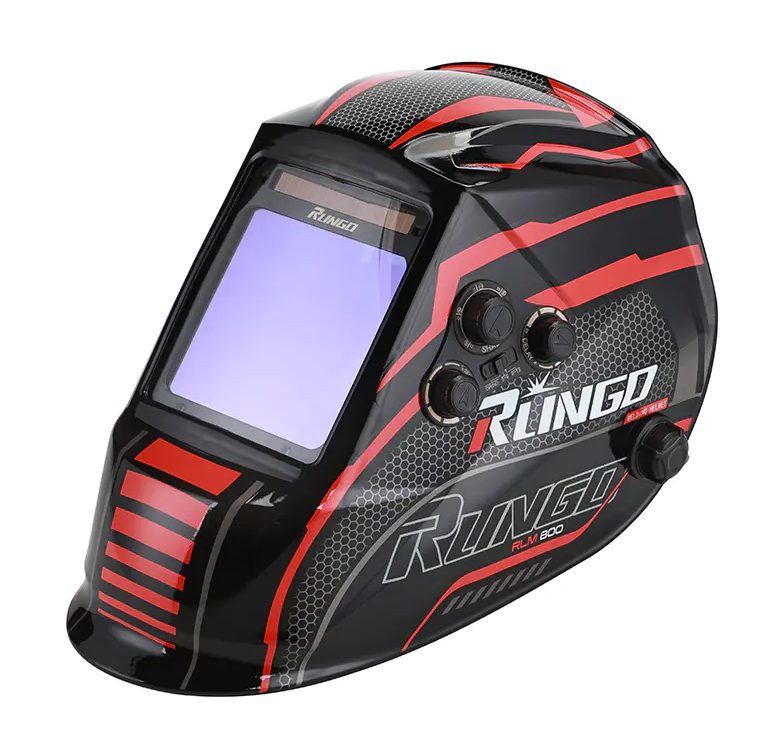Exploring Whether Sensitivity Changes in Welding Helmets Under Different Lighting Levels

When welders select an Auto Lens Welding Helmet, a common concern is whether its sensitivity changes under different lighting conditions. This question is important because welding tasks are often carried out in diverse environments, ranging from brightly lit workshops to darker, confined areas. The helmet’s role is to detect the arc and instantly adjust its lens shade to protect the welder’s eyes while maintaining clear visibility. If the sensitivity of the sensors varies significantly with the surrounding light, the performance of the helmet may be affected, potentially influencing safety and efficiency.
Most helmets in this category are equipped with light sensors that trigger the darkening of the lens when a welding arc is detected. The sensitivity settings allow welders to fine-tune the helmet’s response according to their working conditions. For instance, in a bright environment, the helmet must differentiate between general background light and the intense arc light. Without proper adjustment, the lens may react too quickly or fail to activate consistently. Conversely, in a dimly lit area, the sensors need to ensure they do not misinterpret small flashes or reflections as a welding arc, which could cause unnecessary darkening and disrupt visibility.
The design of modern helmets addresses these challenges through adjustable sensitivity controls. By turning these controls, welders can adapt the helmet to the environment, ensuring consistent protection without frequent misactivation. This adjustability is especially useful when switching between different welding techniques, such as TIG, MIG, or stick welding, since each process produces different arc intensities. A welder working outdoors in sunlight may require a lower sensitivity setting, while someone working indoors with limited ambient light may benefit from a higher setting to detect the arc more reliably.
Another consideration is the role of lens delay functions. Delay settings allow the lens to remain darkened for a short period after the arc stops, preventing eye strain from residual brightness. The interaction of sensitivity and delay ensures that helmets can perform reliably across diverse lighting conditions. If the sensitivity is poorly adjusted, welders may experience flickering or unnecessary darkening, which not only causes discomfort but can also reduce productivity by interrupting the welding flow.
Durability of the sensors also contributes to how well a helmet adapts to changing light. Over time, excessive dust, spatter, or scratches on the helmet surface can affect sensor performance, leading to less accurate detection. Regular cleaning and proper storage help maintain optimal function. Higher-end helmets often integrate multiple sensors placed strategically around the viewing area to improve detection accuracy, ensuring the helmet responds effectively even when part of the sensor is blocked or shadowed.
In conclusion, while the sensitivity of an Auto Lens Welding Helmet can indeed be influenced by different lighting conditions, the impact is minimized by using adjustable sensitivity and delay features. Proper use of these settings allows welders to tailor the helmet’s response to their environment, maintaining both safety and comfort. Consistent maintenance and choosing a well-designed helmet further ensure stable performance, regardless of whether the work is carried out in bright sunlight, dim interiors, or anything in between.
Product Features:
1. Durable and Lightweight Design
2. Adjustable Headgear and Integrated Control Panel
3. Adjustable Shade Range DIN 9-13
4. Grind Mode for Versatility
5. Certifications
6. Comfort
- Art
- Causes
- Crafts
- Dance
- Drinks
- Film
- Fitness
- Food
- Oyunlar
- Gardening
- Health
- Home
- Literature
- Music
- Networking
- Other
- Party
- Religion
- Shopping
- Sports
- Theater
- Wellness


